#Musical Harmony
Text

#i spent way too much time on this#in fucking IMGFLIP#which is why it looks weird. imgflip could not handle all the shit i was doing.#the guy who didn't like musicals#tgwdlm#lah dee dah dah day#friendpilled visitmaxxer#paul matthews#greenpeace girl#harmony jones#hatchetfield#hatchetverse#starkid#team starkid
5K notes
·
View notes
Text



rewatched treasure planet
#dreamworks trolls#trolls#trolls branch#trolls john dory#trolls clay#trolls au#treasure planet au#oooouughghg treaure planet!! love it!! love the characters!!! love their dynamics!! love the art!!!! love the music!!!!#was rereading some tags on a past post and @sili-a mentioned B &JD feeling like jim & silver#and hoooboy do I enjoy that image#in this au there would be some changes from the movie it wouldn't be a 1 to 1 comparison.#clay and branch have the strongest bond as clay did come back after earning his doctorate#but by then branch has already been struggling for a couple years#treasure planet=perfect family harmony??#idk the details really#i don't really have any plans for this heh heh#trolls are there own alien species: still considered small compared to other species#trolls aren't usually taken seriously#really proud of my rhonda#first attempt on digital painting!#it was pretty fun but also confusing lol#so I just kept it loose#gave up at some point hence why i just used the space frame straight from the movie lol just added a pole for b to hold onto#trolls fanart#my art <3#excuse the messiness
2K notes
·
View notes
Text
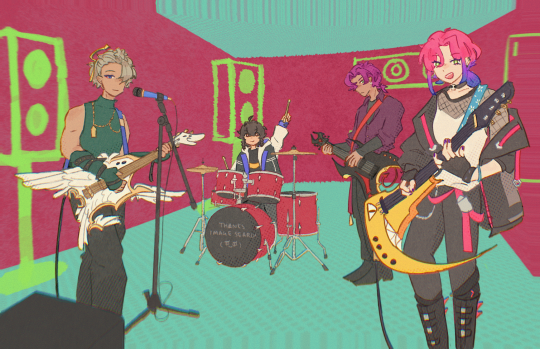
the rest of the cast got their new song covers, so i wanted to try putting the others in a band :>
i did want to make it look a bit like an album cover but i have no idea how those are designed so eh?? i also couldn't think of any band or album/song names so. if anyone has any ideas...
#art#obey me#obey me raphael#jtta ik#obey me mephistopheles#obey me thirteen#from left to right they are: lead singer/rhythm guitar - drummer - lead guitar - bass#tbh any of them could've taken any role but bassist girl thirteen spoke to me and raph canonically sings well so that felt like it fit#i did consider ik as lead but she'd absolutely shred on the drums. she has so much pent-up rage to let out...#in context this is for a music festival diavolo's putting on but it'd be a fun au as well#i like to think thirteen is the overwhelming favourite of all the fangirls#also in terms of band name...#i was thinking something based on the fact that there's one of each species (human/demon/angel/reaper) but what word can i use for that#jo has suggested something involving the numbers 3 and 4 for 3 realms and 4 members#3.4HZ Harmony was the best we could come up but it feels like there should be a sorta other-world element to it#then again if it's an au then i guess they'd all be humans anyway#ah whatever#life and work related obligations have been growing so naturally i've been starting a bunch of creative endeavours to try to get away from#is this a long term good thing for future career prospects? probably not. but i'd rather be happy
479 notes
·
View notes
Text
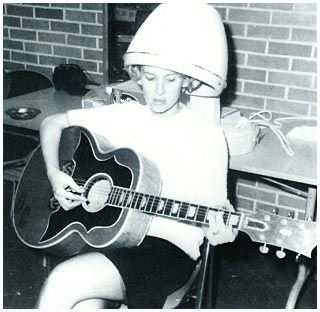
Tammy Wynette playing guitar while getting her hair done (date unknown assuming 60s)
#contemporary art#candy darling#ethel cain#chloe sevigny#music#harmony korine#brittany murphy#hari nef#john waters#nick zedd#tammy wynette#nicole dollanganger#lana del rey#ldr#ldr aesthetic#southern gothic#south#country#old country#western#dolly parton#dollywood#girlblogging#girly tumblr#girly aesthetic#girly girl#glamour#50s#60s aesthetic#70s music
805 notes
·
View notes
Text
confession of the day: I didn't know Greenpeace actually existed. I thought it was something Starkid made up for Harmony Jones to yap about
#starkid#hatchetfield#tgwdlm#the guy who didnt like musicals#greenpeace#greenpeace girl#harmony jones#mariah rose faith#rose rabbles
315 notes
·
View notes
Text
hatchetfield textposts: tgwdlm edition
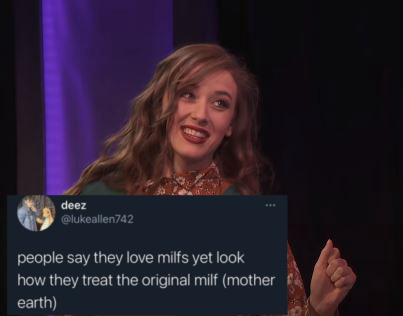

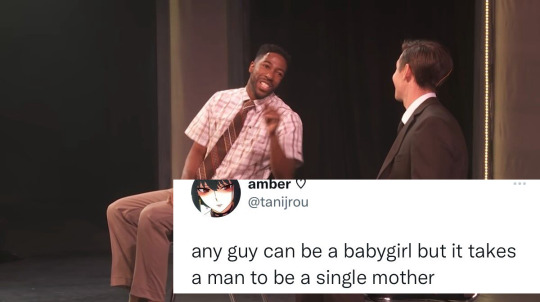
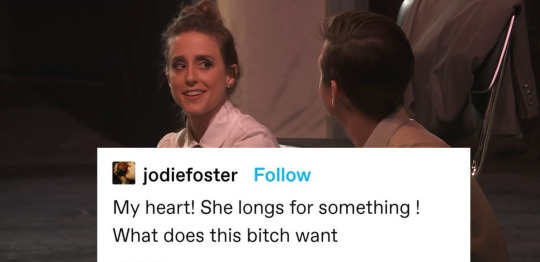

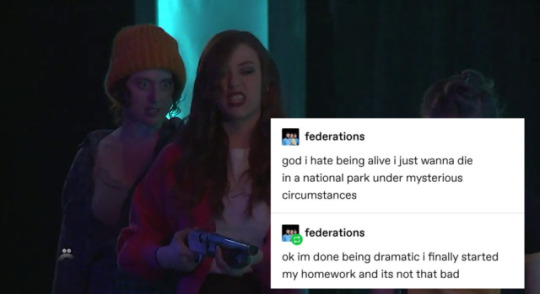

part 1, part 2, part 3
#the guy who didn’t like musicals#tgwdlm#hatchetfield#hatchetverse#textposts#greenpeace girl#harmony jones#paul matthews#bill woodward#emma perkins#charlotte sweetly#alice woodward#ted spankoffski#cindy thinks about the implications
482 notes
·
View notes
Text
underrated point of difference in the conventions of ancient and modern theatre is that the ancient chorus is all one gender and age group while a modern ensemble is more usually mixed, at least in terms of gender. must consider this more.
#presumably this means the ancient chorus was supposed to be all the same voice part/tone too#like a chorus of old men is a chorus of tenors not a bass/baritone/tenor chorus#i dont think what we know of ancient music suggests they were doing something like modern choral harmony#but still. it's a uniformity of voices that modern musical theatre isnt into (even in single-gender ensembles)#on that note actually i should listen to suffs#mine
353 notes
·
View notes
Text
heartbreaking realization that in the musical. each main character has their individual song that explains their motivation for joining the quest. and each song has some sort of ensemble to support the lead singer. except for annabeth's. because annabeth is her own support system.
#there is no ensemble#there are no backing vocals#there are no harmonies#just annabeth singing her heart out into a void#begging for a response#any indication that someone hears her#and she's met with an echo of a piano that plays a lonely melody#this is tragic#percy jackon and the olympians#pjo text post#pjo#the lightning thief#the lightning theif musical#tlt musical#tlt commentary#tlt shitposting#annabeth chase#annabeth chase headcanon#annabeth chase hurt#someone get this girl a therapist#someone help this girl
301 notes
·
View notes
Text
this trend of important Broadway musicals strugging to stay open even for a few months when jukebox musicals and movie to stage adaptations and anything with a famous enough name in the cast can thrive literally no matter what it's even about is. worrying
213 notes
·
View notes
Text
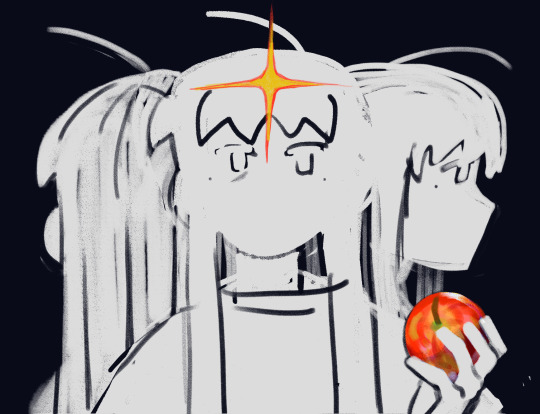
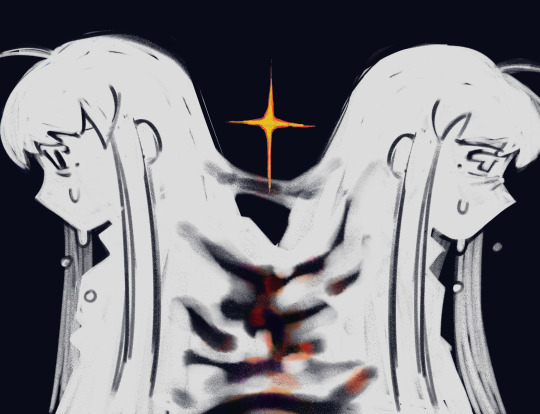
it ate my soul and left my body
#trigun#vash the stampede#millions knives#trigun 1998#vash#knives#I just think the death of their harmony together is so interesting that it’s like . as if a whole person died#tearing each other apart from being one but it doesn’t erase being connected.. or something symbolic like that idk I tried to convey that#also plantc*st freaks get the fuck off my shit LOL I hate you it’s not for u!!!!!#their relationship as brothers is so important to me I really love it dearly heee heee… *breaks all my bones* ok#also caption is Float On by good tiger I love their music . lol HI. ok bye#no new color work i forgor to touch them all up
798 notes
·
View notes
Text
Just feel like im not a typical telenious/antimachus shipper...
I mean I like the interaction between these two but it doesn't take much for a romantic relationship between them… Hatred is the main tone between their emotions, so any work that depicts that aspect of it is something I won't hesitate to put in my mouth… It sounds unhealthy but it's like that's the unhealthy flavor that got me on this ship, oh no....(sry but not sry
But anyway, enjoy my modern AU (I'm a victim of KPOP so I drew them taking Life4Cut)

#epic the musical#epic the musical fanart#the oddyssey#epic the wisdom saga#telemachus#epic telemachus#antinous#epic antinous#tw: they live in harmony
86 notes
·
View notes
Text
the harmony on "will you be my valentiiiiiiiine!" is my favourite thing ever actually
#i die every time i hear it#it makes me want to clutch my chest in anguish and collapse to the floor#i cant deal#it's so good#same with the harmony on the second PASSION DIIIIEESS#so scrumptious#i want to eat harmonies#i love harmonies so much#christian borle#andrew rannells#falsettos#falsettos musical#me when i fixate on media#leo talks!
219 notes
·
View notes
Text
🎸 BACK TO YOU (STUDIO VERSION) recorded by a fan!
update: listen to the full audio here
#louis tomlinson#back to you#oh MY GOD IT SOUNDS SO GOODFHHFGFHD#I NENED TO INJETC THIS HIN MGY BRAIN#the harmonies <333 his raspy voice <3333 the whole music prod!!!! LOVE IT#need the clearer ver pls#NEED THIS ON STREAMING NOWW#edit: added the full audio! thanks to @lokiislit on twt <3
378 notes
·
View notes
Text
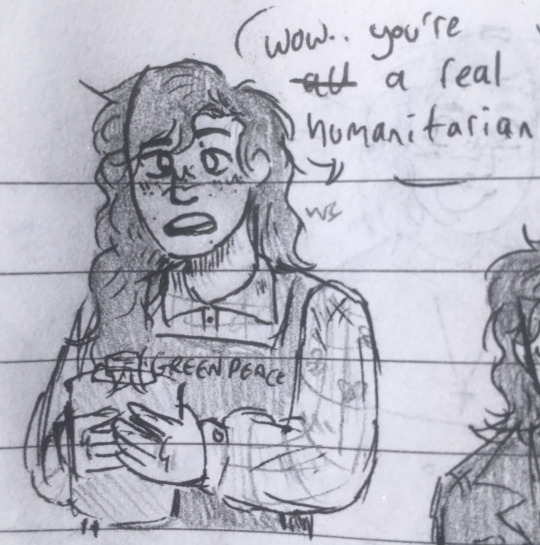
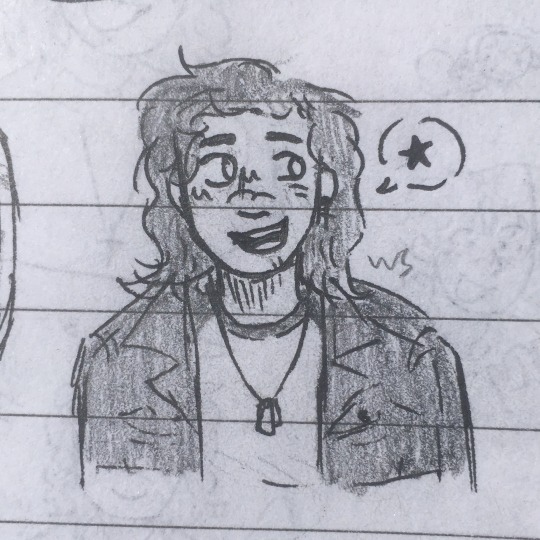


who is hatcheting their field
edit : hopefully fixed the harmony image !
#harmony jones#greenpeace girl#ethan green#ziggs#ziggy#grace chasity#npmd#nerdy prudes must die#nightmare time#tgwdlm#the guy who didn't like musicals#hatchetfield#starkid#fanart
173 notes
·
View notes
Text


How Far We’ve Come - Music Theory Analysis
[Disclaimer: I went to university for music as a violin primary and have the most confidence with classical strings. I passed my piano proficiency courses, but that is the extent of my piano knowledge. It has been a few years since I have done an in-depth composition analysis of any piece, let alone transcribing a piece by ear and then analyzing it. Music theory has never been my strong suit! Please excuse any mistakes in notation, and any inaccuracies in my transcription or analysis. I did my best and this was purely for fun *shaky thumbs up*]
----------------------
'How Far We’ve Come' by Harlan Guthrie is a duet between Grand Piano and Cello. This piece opens with solo piano, either in a pickup measure or in a single measure of 2/4 before transitioning to 4/4 time in measure 2. Throughout its entirety there are many moments of rubato which have been notated as ritardando and a subsequent a tempo. To most accurately follow the phrasing, listening to the recording is highly recommended.
This piece begins in the key of F#M or the enharmonic spelling of GbM. Although unpleasant to look at with either 6 sharps or 6 flats, depending on which spelling is followed, this key is often used by composers to invoke emotions of a conquest story, evoking relief, triumph, victory, and clarity. As we know from our story in Malevolent so far, this meaning is not lost on us. I have chosen to keep this piece as F#M since that is how I originally began transcribing it. I have also attached the GbM version at the end of the post, however all the analysis follows F#M spelling.
The lone piano begins on the third of our I chord with a hesitant, heavily rubato 8th note pickup into measure 1. The transition from measure to measure in this first phrase gains little confidence, especially with the transition from the pickup into m. 1 as this is the only instance in the piece where the set of 8th notes in the left hand do not lend itself into the next right hand pickup (four 8th notes instead of five). Each lead-in to the downbeat is stretched, pedal held throughout the measure to allow the sound to linger. Each press of the keys is deliberate, yet maintains a mezzo dynamic as the sound fades. m.2 is introduced with a vi chord, creating a hint of unease before resolving in m.3 to a IV(add7). We end our first phrase with a half cadence to a V chord, leading into a V7 as our next phrase begins with a B.
As we enter our second phrase it is similar to our first with m.5 beginning with a I chord, m.6 expands our vi chord compared to its first iteration, resulting in a more confident feel as we continue into m.7 with yet another expansion to our IV(add7). M.8 ends this phrase as we reach another half cadence V chord almost V7.
Beginning m.9 the piece has a few possible paths of analysis, we arrive on a vi chord if we are remaining in F#M, which unlike our other initial starting phrases this throws us into a melancholic mood. There is a possibility of modulation to the relative minor (D#m), however I believe it remains in F#M and utilizes inversions of our chords and will continue with this assumption for the next phrase.
Remaining in F#M, m.10 could be a vi(4/2) inversion, or a I(6/4) inversion. Because Measure 11 moves to a ii chord, I believe it makes more harmonic sense for m.10 to be a vi(4/2) inversion as moving from a I(6/4) - ii is less common than a vi(6/4) to a ii.
M.11 into m.12 is a fascinating progression. We have a V with the (g) in m.11, then we are descending to a Dnat, A#, E# progression. The Dnat is what has thrown me off the most, as it is a minor chord of sorts but doesn’t exist within our key of F#M, or relative D#m. The E# A# progression I believe is a I(4/2) chord, as it is leading us back into the next phrase. Even spelling enharmonically as a A#, Cx, E# chord it does not naturally occur within our existing key. After many hours of checking theory textbooks, writing out possible modulations, and playthroughs of the chords, I’m choosing to leave this as a V-I(4/2) progression and accepting my loss that I do not know what chord exists in the downbeat of m.12. However, I can say that resolving to something that is not a root tonic further creates this sense of melancholy.
Bringing us to our next phrase at m.13, similar to our previous phrase a vi chord but instead of resolving to an A# it resolves to the root D#. M.14 is identical to m.10 with the exception of the lower octave A#3 before resolving in m.15 to a ii chord until the fourth beat of the measure which leads us into measure 16 - resolving to a IV-V half cadence by the end of the measure.
Reaching m.18 we are returning to our original phrase. This is where our cello enters for the duet, in which I have some observations about musicality first. As the piano is using a significant amount of pedal to sustain the sound, the cello utilizes a wide vibrato to create a warm sound. Notably, this doesn’t occur as significantly when entering with the lower notes. The cello is confident, encouraging the piano forward and maintaining a solid momentum even with the hesitance the piano has shown.
M.18 we begin on a I chord, supported by the cello playing a low F# as the root. In the pause between phrases, it's as if you can feel the performers breathing together before they move to m.19, our vi(add7) chord.
Measure 20 I have quite a bit to talk about. Stacked chord analysis is not my forte (pun intended). From what I could hear, there is a B1, F#2, B2, F#3 in the cello, while the piano continues with a IV(add7) chord. B1 is impossible to play on a cello with traditional tuning, in order to achieve this note they would have to tune their lowest string - their C string - down a half step. The chord B1/F#2/B2/F#3 is also impossible to play on a single instrument. If one cello tuned their C down to a B, then they could feasibly play the bottom chord, possibly the two B’s in octaves. It is possible for a cellist to play an F#/B/F# chord, however it would be uncomfortable and not result in a good tonality with it being a triple stop - but, the second cello could split the chord and play a different combination (F#2,B2 or B2,F#) with success. Other solutions to this could be having a double bass play the pedal B, as it would be within their ability on and remain in the correct octave, or having the piano cover the pedal B. This massive chord then resolves simply to a half cadence V chord in measure 21.
Entering our last section, m.22, we return to a phrase similar to the beginning, with a confident I chord. With each measure we go to a more traditional chord progression to a V-IV-V in measures 23, 24, and 25 respectively. In an exciting turn of events, we land on a I chord in our final measure. The first PAC in the entire piece, and yet, it doesn’t sound as if the piece is finished. Throughout its entirety, all the phrases have been a form of inauthentic cadence. We end on a Perfect Authentic Cadence, a V-I, it should sound resolved. And yet, it continues on. The notes ring, and if left on repeat (as I have done for this analysis), it makes sense for it to continue.
In conclusion, I believe this duet is in an general AABBAA format, with A being Major key tonality and B encompassing a minor key tonality. This piece is a conversation, it’s full of emotion and hesitance and is a fantastic representation of everything we’ve seen Arthur and John go through so far in the podcast. I can’t help but think of “I’ve come so far…and I have miles to go before I sleep” with this piece as a reflection of that. This composition is saying “Look, see how far we’ve come, what we’ve done to get here. How we’ve changed and grown.” All this to say, it’s an amazing story and an amazing composition. If you made it this far, I’m glad you came along in this musical journey with me and feel free to add anything I may have missed (or possibly mistaken).
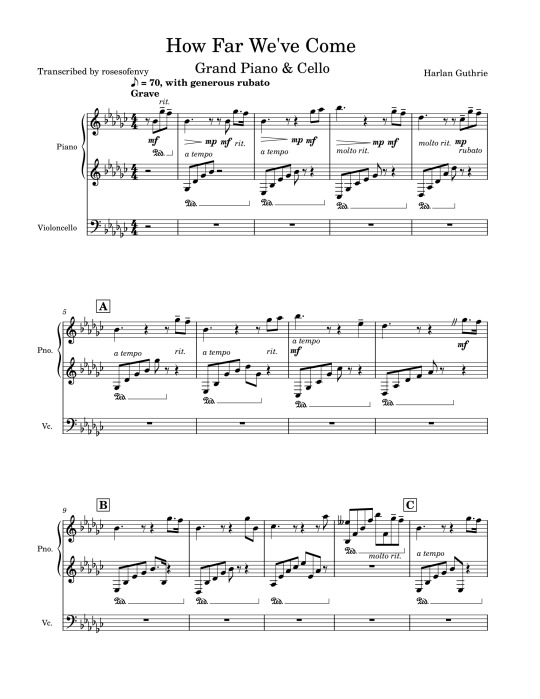
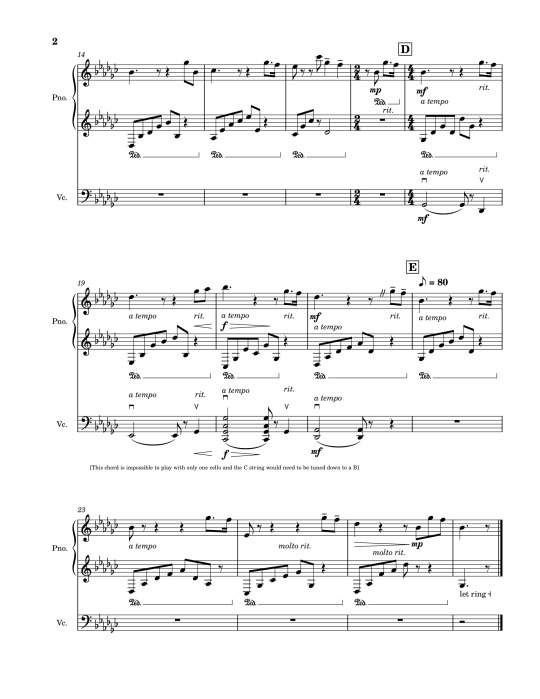
#malevolent#malevolent podcast#malevolent soundtrack#how far we've come#harlan guthrie#arthur lester#john doe#music theory#music theory analysis#piano#cello#I'm working on performing this but I only have access to a piano and cello once a week :'(#and I have so many other projects I've been working on *cries*#i spent a good week transcribing this#then a good two days analyzing it#my music theory chops are rusty#I was seriously pulling out my orchestration and harmony in context textbooks to check my facts#and i'm still worried i made mistakes askljdfhlsa#take all of this with a grain of salt!!!#envy writes
90 notes
·
View notes
Text
Nosferatu (1922)
Music: Dusken Harmony
#nosferatu#vampire movies#music#gothic#gothgoth#darkwave#nosferatu the vampyre#vampire#vampires#gothic horror#post punk#gothic romance#goth rock#coldwave#new music#goth aesthetic#goth#goth girl#romantic goth#new wave#dusken harmony#dracula#old movies#horror#love#dark aesthetic#dark#dark music#spooky#spooky aesthetic
120 notes
·
View notes